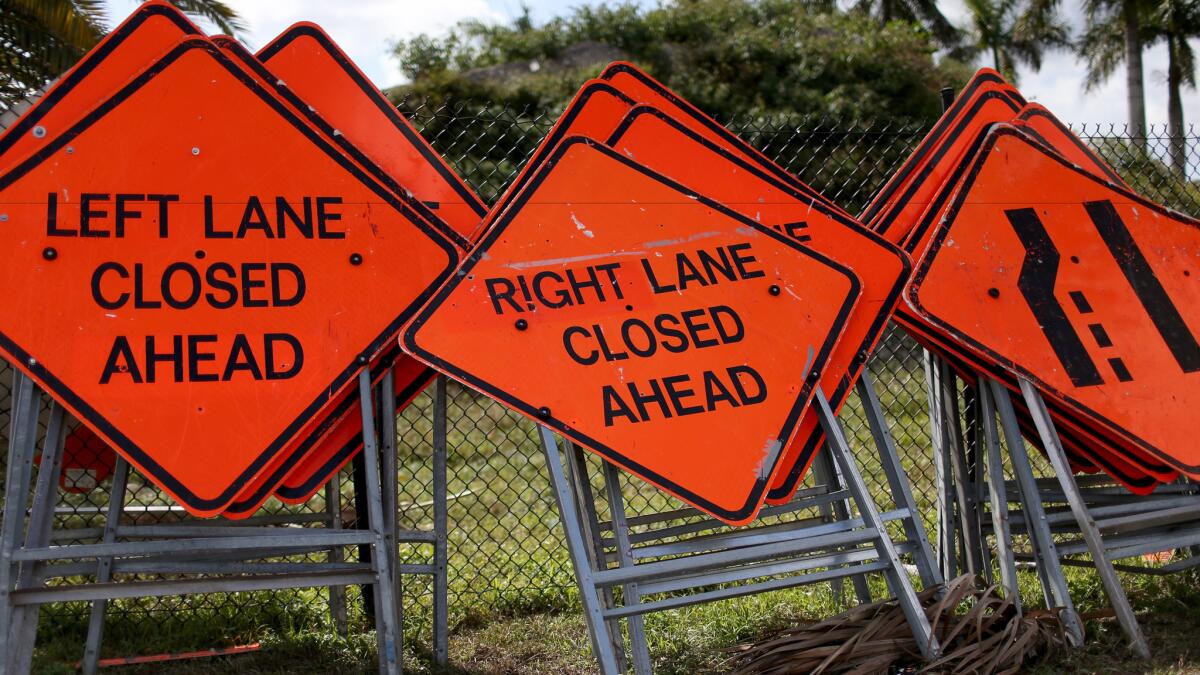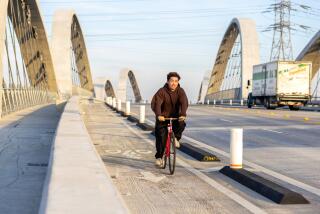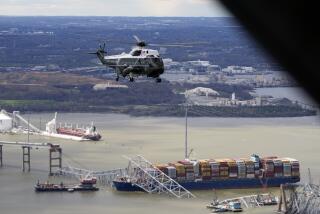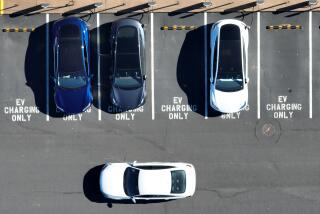Why this is the perfect time to invest in infrastructure, and why it probably won’t happen

Reporting from Washington — Broken water mains, creaking subway systems, tens of thousands of rickety bridges and countless miles of shoddy, traffic-clogged roads.
America’s infrastructure is crumbling. Never has there been a better time to bolster public investments and shore up one of the nation’s biggest competitive weaknesses, say many advocates for stepped-up spending. Yet the golden opportunity may soon pass. Here’s why:
What’s so great about the timing right now?
You can’t borrow money for much cheaper. Long-term interest rates remain near record lows; yields on 10-year Treasury bonds, which dipped further after Britain’s vote to leave the European Union, hover around 1.5%. With inflation running just a tad below, that means it’s almost like free money for Uncle Sam.
Construction materials also are near cyclical lows, thanks to the bottom falling out of the commodities market. But such favorable conditions for ramping up projects won’t last forever. Construction labor is already getting harder to find. Industry unemployment is down to 4.6%, from nearly 10% just three years ago.
Before it’s too late, “we should be creating the infrastructure bank and moving aggressively to fund it,” says Rep. John Garamendi (D-Walnut Grove), a member of the House Transportation and Infrastructure Committee.
How bad is the infrastructure problem?
Globally, America ranked 11th this year in infrastructure quality, below most of its peer group of major developed nations, according to the World Economic Forum.
But here’s a more sobering statistic: Across the nation, a whopping 142,915 bridges — or about one in every four — were classified “deficient” in 2015 by the Department of Transportation. One of them was the half-century-old Tex Wash Bridge on I-10 in Southern California’s desert. It crumpled last summer after heavy rains, costing millions in repairs and closing a main artery from California to Arizona for five days.
It wasn’t always so bad. In the mid-1960s, federal, state and local government spending for structures, including roads and bridges, represented more than 4.5% of the nation’s gross domestic product, or total economic output. That’s since declined to a meager 1.5% in recent years.
Why did federal infrastructure spending slow down so much?
The main problem is that federal funding for transportation has come from a fuel tax of 18.4 cents per gallon. That hasn’t changed since 1993, meaning it hasn’t kept up with inflation, the increasing population and amount of infrastructure, or the rising costs to maintain the roads, airports, rail, airports and the like.
What’s more, as autos have become more fuel-efficient, spending for gas simply hasn’t grown in proportion to the miles driven by motorists. That means more use — or damage to roads — but not more money to maintain or upgrade them.
So how much money are we talking about to catch up?
By Moody’s Analytics’ estimates, all levels of government would need to spend an extra $865 billion total over 10 years for infrastructure to bring investments back to historical averages, at least as far as spending per GDP.
But because of years of lagging investments, much more than that would be needed annually to catch up. The Federal Highway Administration figures it would take $124 billion to $146 billion a year in capital investments in roads to see “noticeably improving roadway conditions and performance.”
What would be the impact to the economy?
If spending returned to historical norms, it would add as much as $1.5 trillion to GDP over 10 years, says Moody’s, which based its projections on a multiplier of 1.78. And that would support as many as 12 million additional jobs.
Douglas Holtz-Eakin, president of the right-leaning American Action Forum, thinks that’s way too high; the right multiplier might be half that, or even less depending on the broader economic conditions. He’s also skeptical that public infrastructure spending will generate as much productivity gains as economists have projected. Fixing potholes may get you into the office quicker, he says, but that doesn’t mean you’ll be any more productive at work.
If the timing is right and it would help the economy, why doesn’t the government act?
In two words: tea party. It’s no secret that this wing of congressional Republicans has had an outsized influence on the GOP leadership, with its mantra of reducing government spending and lowering taxes.
But neither did the Obama administration really “put the muscle” behind its budget request for more infrastructure spending, said Garamendi. The White House last year proposed spending $485 billion for highways, bridges and rail over five years, but ended up getting only $305 billion.
Even though both presumed presidential nominees, Hillary Clinton and Donald Trump, have spoken of the need to address failing infrastructure, political deadlock and disagreement over where to get the money is likely to block progress for the foreseeable future.
Sooner or later, though, most everyone agrees that Congress will have to come up with a new funding source to replace the existing gas tax, especially in an ever more fuel-efficient and less carbon-dependent economy.
Can’t states and cities pick up the slack?
To some degree, they already have. A growing number of states have raised fuel taxes of their own to support infrastructure projects. Counties like Los Angeles have boosted sales taxes, and municipalities including Chicago have raised infrastructure bond issues.
But after the Great Recession, state and local governments remain cautious about debt financing. One drawback of raising sales taxes to fund infrastructure is that such taxes are inherently unpredictable as a revenue source, because they fluctuate with the vicissitudes of the economy, says Asha Agrawal, a transportation economics expert at San Jose State University.
What’s more, she says, smaller rural areas have little capacity to raise money to improve roads and bridges. The upshot is that all these still would not be enough to make up for the shortfall in federal spending.
Could private-public partnerships be the solution?
Private investors, including foreign firms, are beginning to get into the game. Georgia, for example, this year signed a $679-million deal to redevelop a major highway interchange in metro Atlanta with the Spanish multinational firm Ferrovial Agroman.
Ferrovial is fronting the investment money for Georgia and will build the interchange in exchange for guaranteed payments over a long period of time, says Wassim Selman, infrastructure president of the North American operations of Dutch-based Arcadis, a consultant on the project.
Still, the private-sector involvement in U.S. infrastructure remains tiny and isn’t likely to grow big any time soon. A big factor that is that government agencies remain circumspect about letting private firms manage or operate public roads and structures, says Selman.
Unlike in Europe, there’s not as much trust between government and the private sector in the U.S., he says. “Culturally, we’re not there yet.”
Follow me at @dleelatimes
More to Read
Sign up for Essential California
The most important California stories and recommendations in your inbox every morning.
You may occasionally receive promotional content from the Los Angeles Times.











